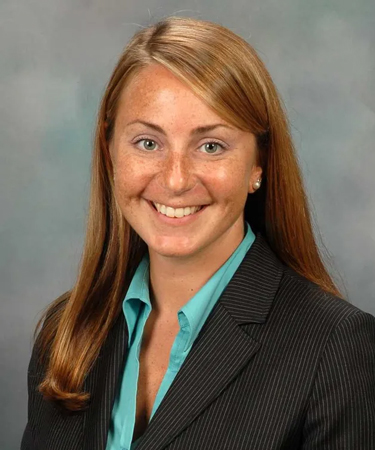Monday November 12, 2018 –
Wednesday November 14, 2018
8:00am-12:15pm
Event Details
When
Where
The Westin Sarasota, FL
The Westin, Sarasota, Florida
Event Code
SEMLA-3320181112
This is a new 3 day conference but can be combined with the new 2 Day – Medical Marijuana: What Primary Care Providers Need To Know conference by selecting the option labelled “2 Event Ticket” for a reduced discounted price. By selecting that option, you will be registered for both conferences.
Course Topics
Day 1
Sports Related Concussion.
Upon completion of this session, the participant should be able to: GL, COMP
- Recognize the signs and symptoms of sports related concussion (SRC)
- Demonstrate sideline and in-office evaluation of SRC
- Apply return to play guidelines per consensus recommendations and specific state laws
Relative Energy Deficiency in Sport (RED-S), formerly Female Athlete Triad.
Upon completion of this session, the participant should be able to: GL, COMP
- Discuss the history of Female Athlete Triad and its new term RED-S
- Recognize the signs and symptoms of RED-S
- Apply a multidisciplinary treatment strategy for RED-S
- Employ individualize return to play considerations using the return to play guidelines
Common Wrist and Hand Injuries in Athletes.
Upon completion of this session, the participant should be able to: COMP, EBM
- Perform a physical examination of the hand and wrist
- Assess and discuss the treatment for patients with common forms of wrist tendon problems, including an evidenced based approach to DeQuervain’s tendosynovitis
- Describe the evidence based stepwise treatment approach to patients with osteoarthritis of the 1st carpometacarpal joint
- Discuss the evaluation of patients with suspected scaphoid fracture
- Discuss the differential diagnosis and evaluation of patients with ulnar wrist pain
Ankle Sprains.
Upon completion of this session, the participant should be able to: GL, COMP
- Discuss the use of the Ottawa Ankle Rules to determine if an x-ray is necessary after acute ankle injury
- Perform a competent ankle examination in a patient with ankle pain
- Describe the treatment of an athlete with a lateral ankle sprain
- Differentiate between a lateral ankle sprain and a high ankle sprain
Discuss the differential diagnosis of ankle pain after acute injury
Day 2
Baseball Medicine
Upon completion of this session, the participant should be able to: COMP, EBM
- Illustrate biomechanics of overhand throwing
- Recognize youth baseball injuries of the upper extremity and discuss treatment
- Understand adult injury counterparts to upper extremity injuries and discuss non-operative vs operative techniques
- Use evidence based medicine to provide recommendations about prevention of injury, especially in youth baseball pitching
Pediatric Orthopedic Injuries.
Upon completion of this session, the participant should be able to: GL, COMP
- Identify the areas of a long bone in a child and describe the Salter-Harris fracture classification
- Recognize common injuries and treatment recommendations of the pediatric upper and lower extremity
- Evaluate various apophyseal injuries based on location
Cardiac Conditions in Young Athletes.
Upon completion of this session, the participant should be able to: COMP, GL
- Differentiate Athletic Heart Syndrome from significant cardiovascular disease, such as Hypertrophic Cardiomyopathy in young athletes
- Discuss the causes of sudden cardiac death in young athletes
- Employ the AHA/ACC Scientific Statement on Eligibility and disqualification of athletes with cardiac abnormalities
- Discuss the controversies in the use of the screening EKG in young athletes
The Sports Pre-participation Examination (PPE).
Upon completion of this session, the participant should be able to: GL, COMP
- Employ the American Heart Association Guidelines when screening athletes for cardiovascular disease during the PPE
- Determine if an athlete with impaired vision or solitary kidney can be cleared to participate in sports
- Determine under what circumstances an athlete with seizure disorder can be cleared to participate in specific sports
Employ BP guidelines for children and adolescents with respect to sports participation
Day 3
Knee Examination- A Practical Hands-On Approach.
Upon completion of this session, the participant should be able to: COMP
- Identify the relevant anatomy of the knee
- Demonstrate key physical exam findings of the knee including:
- Inspection
- Palpation
- Range of motion
- Special tests (Lachman, Anterior drawer, Valgus/Varus stress, Patellar apprehension, McMurray, Apley, Thessaly)
Common Knee Injuries.
Upon completion of this session, the participant should be able to: COMP, EBM
- Recognize, evaluate, and understand evidence based treatment options for common knee injuries seen in primary care including:
- Ligament injures (MCL, LCL, ACL)
- Meniscal injuries
- Patellofemoral Pain syndrome
- Osteoarthritis
Get a Grip: How to Treat Your Injured Tennis Players.
Upon completion of this session, the participant should be able to: COMP, EBM
- Describe the epidemiology of tennis injuries
- Describe the common injuries that affect tennis players, based on epidemiologic studies
- Discuss the evaluation and evidenced based treatment options for patient’s with lateral epicondylitis
- Describe a Return to Tennis Program for players returning from injury
- Understand the rules governing evaluation of injury on court, when serving as a tournament physician
Shoulder Examination – A Practical Hands-On Approach.
Upon completion of this session, the participant should be able to: COMP
- Discuss relevant anatomy of the shoulder
- Demonstrate the components of the shoulder examination
Discuss shoulder examination findings which help differentiate between rotator cuff pathology, instability of the glenohumeral joint and labral pathology
Learning Objectives
Things to Do
Sarasota, Florida
Sarasota offers a truly impressive blend of shopping, cuisine, and attractions. So sail into a breathtaking sunset, golf on lush green fairways, explore St. Armands Circle, or just relax and sink your toes into some of the finest sand in the world.
White sand beaches
21 Zagat-rated restaurants
MLB spring training
Museums, theaters, and festivals
Dozens of golf courses
Presented By

Jennifer Maynard
Assistant Professor of Family Medicine; Family & Sports Medicine Consultant; Program Director Sports Medicine Fellowship Mayo Clinic Florida

Walter Taylor, MD
Assistant Professor Family Medicine, Mayo Clinic College of Medicine; Medical Advisor WTA, Emeritus Staff Mayo Clinic Florida; Jacksonville, FL
Accreditation
Cancellation & Refund Policy
We understand that plans may change. Please review our cancellation and transfer options below:
30+ Days Before Conference Start Date
- Refund: Full refund minus a $50 processing fee.
- Transfer: Registrations can be transferred once, at no cost, to another conference within two years. Alternatively, registration may be placed “on hold” for up to 12 months, allowing participants to choose a suitable conference for transfer within that period.
Less Than 30 Days Before Conference Start Date
- Refund: No refunds available.
- Transfer: Registration may be transferred to another conference within 2 years at no cost. Alternatively, registration may be placed “on hold” for up to 12 months, allowing participants to choose a suitable conference for transfer within that period.
Additional Notes
- No-shows are non-refundable and non-transferable.
- If we cancel a conference, you may choose a full refund or transfer to another event.
On-Demand Courses
- All sales are final. No refunds or transfers.
Invitation Letters
If American Medical Seminars issued you an Invitation Letter to attend a CME conference in the United States and you need to cancel your registration, we will only refund 50% your registration fee. This is to cover the cost of your Invitation Letter and processing costs. By registering, you agree to the non refundable portion of the registration.
Disclaimer
In the event that AMS is required to cancel a live conference, registrants will receive a full refund within 7 business days. AMS is not responsible for charges associated with cancelled flights or hotel rooms.
How to Request a Cancellation or Transfer
Requests must be submitted in writing to mail@ams4cme.com or by calling 1-800-267-4263.
Note: By registering, you agree to this policy.


